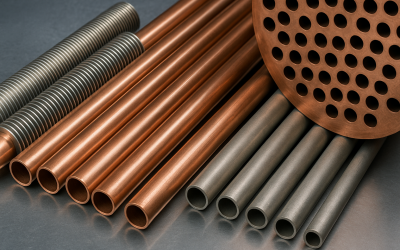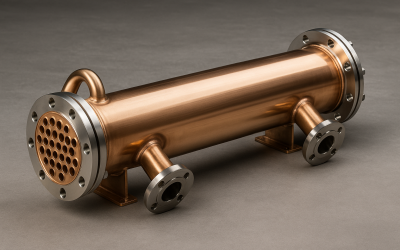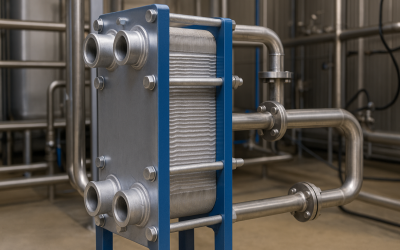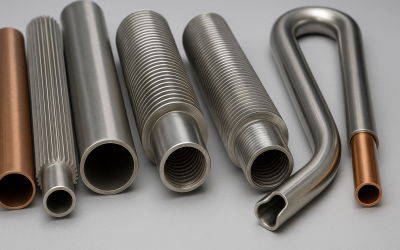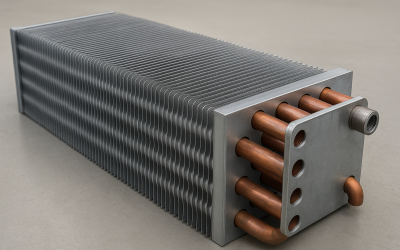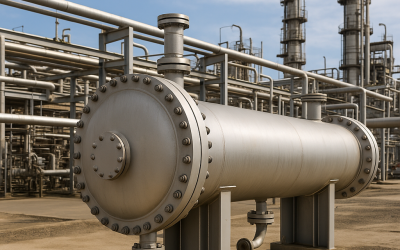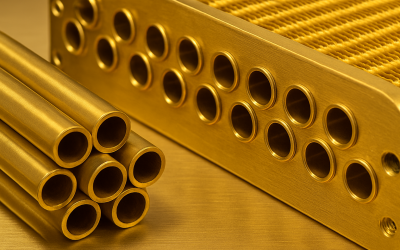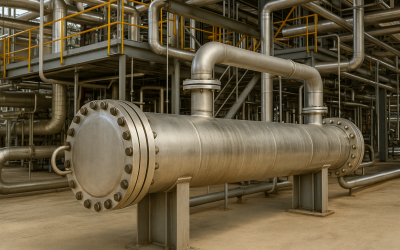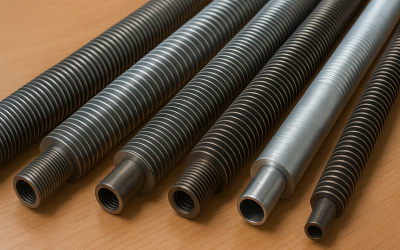Blog
Industry trends, technical insights, and company news from the world of heat exchanger tubes and plates.
The Right Choice for Copper, Copper-Nickel, Finned Tubes, and Tube Sheets
Selecting copper alloys (CuNi 90/10, 70/30), nickel-based alloys, finned tubes, and tube sheets requires careful attention to ASTM/ASME standards, service environment (marine, chemical, HVAC), fin configuration (L/G/embedded), and machining tolerances. This guide...
Why Is Copper Used in Heat Exchangers?
Copper tubes are used in industrial heat exchangers for their excellent thermal conductivity, corrosion resistance, strength, and easy fabrication. Copper and copper-nickel alloys ensure efficient, durable, and low-maintenance performance in power plants, marine...
Industrial Heat Exchanger: What It Is and How It Works
An industrial heat exchanger transfers thermal energy between two fluids without mixing them. It’s a vital component in most process industries, ensuring efficient heating, cooling, condensation, or evaporation. Common designs include plate, shell-and-tube, and finned...
Industrial Plate Heat Exchanger: What It Is and How It Works
An industrial plate heat exchanger is a device designed to transfer heat between two separate fluids through thin metal plates. It is used in industrial processes to heat or cool fluids, recover thermal energy, improve energy efficiency, and reduce operating costs.In...
Different Types of Heat Exchanger Tubes and Their Applications
There are several types of heat exchanger tubes, including smooth, finned, rifled, U-tube, and double-pipe designs. Materials vary from stainless steel and copper to titanium and carbon steel. Each type offers unique benefits in terms of heat transfer efficiency,...
Fin and Tube Heat Exchangers: The Complete, Practical Guide
Fin and tube heat exchangers (often called “finned-tube” coils) boost heat transfer by adding fins to round or flat tubes, increasing surface area on the air side. They are common in HVAC coils, power plants, petrochemical coolers, and marine systems. To choose...
Best Tube Materials for Shell and Tube Heat Exchangers
The best tube materials for shell-and-tube heat exchangers depend on fluid chemistry, temperature, velocity, and fouling risk. Cu-Ni 90/10 and 70/30 excel in natural seawater; aluminum brass (C68700) works in cleaner chloride waters; titanium (Grade 2) offers top...
Aluminum Brass: Composition, Properties, and Applications
Aluminum brass, also known as C68700, is a copper-zinc alloy enhanced with aluminum for improved strength and corrosion resistance. Known for its performance in harsh environments, aluminum brass is widely used in heat exchangers, condenser tubes, and marine systems...
The Complete Guide to Heat Exchangers: Types, Design, and Applications
A heat exchanger is a device that transfers heat between two fluids without mixing them, essential in countless industrial processes. The five main types: shell-and-tube, plate, air-cooled, plate-fin, and scraped surface, are used based on fluid type, pressure, and...
Finned Tubes: Designs, Advantages, and Selection Guide
Finned tubes increase heat transfer efficiency by adding external surface area. There are 8 main types of finned tubes: G-Fin, L-Fin, KL-Fin, LL-Fin, Crimped, Extruded, Integral Low-Fin, and Welded. Each type differs in construction method, temperature tolerance,...
